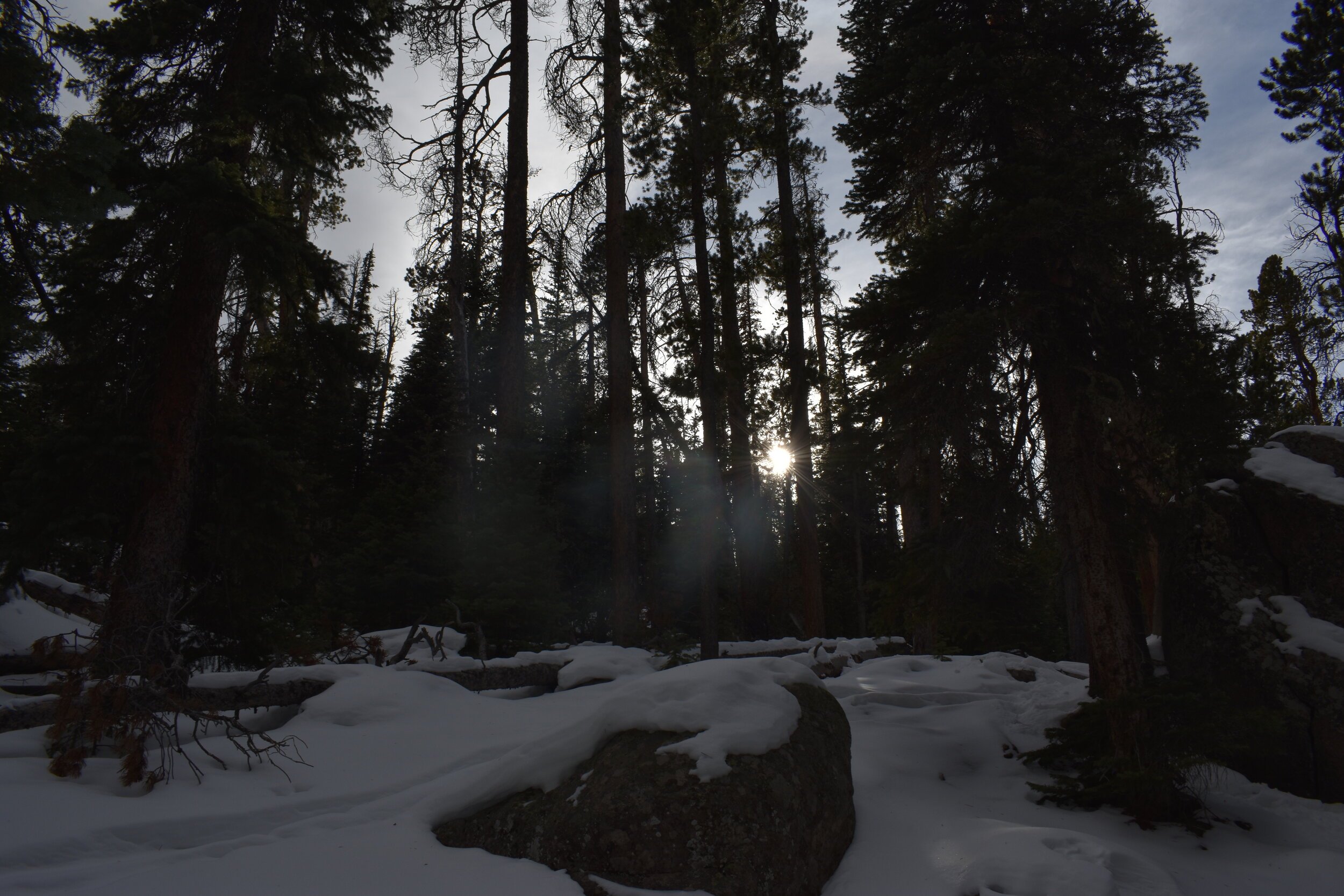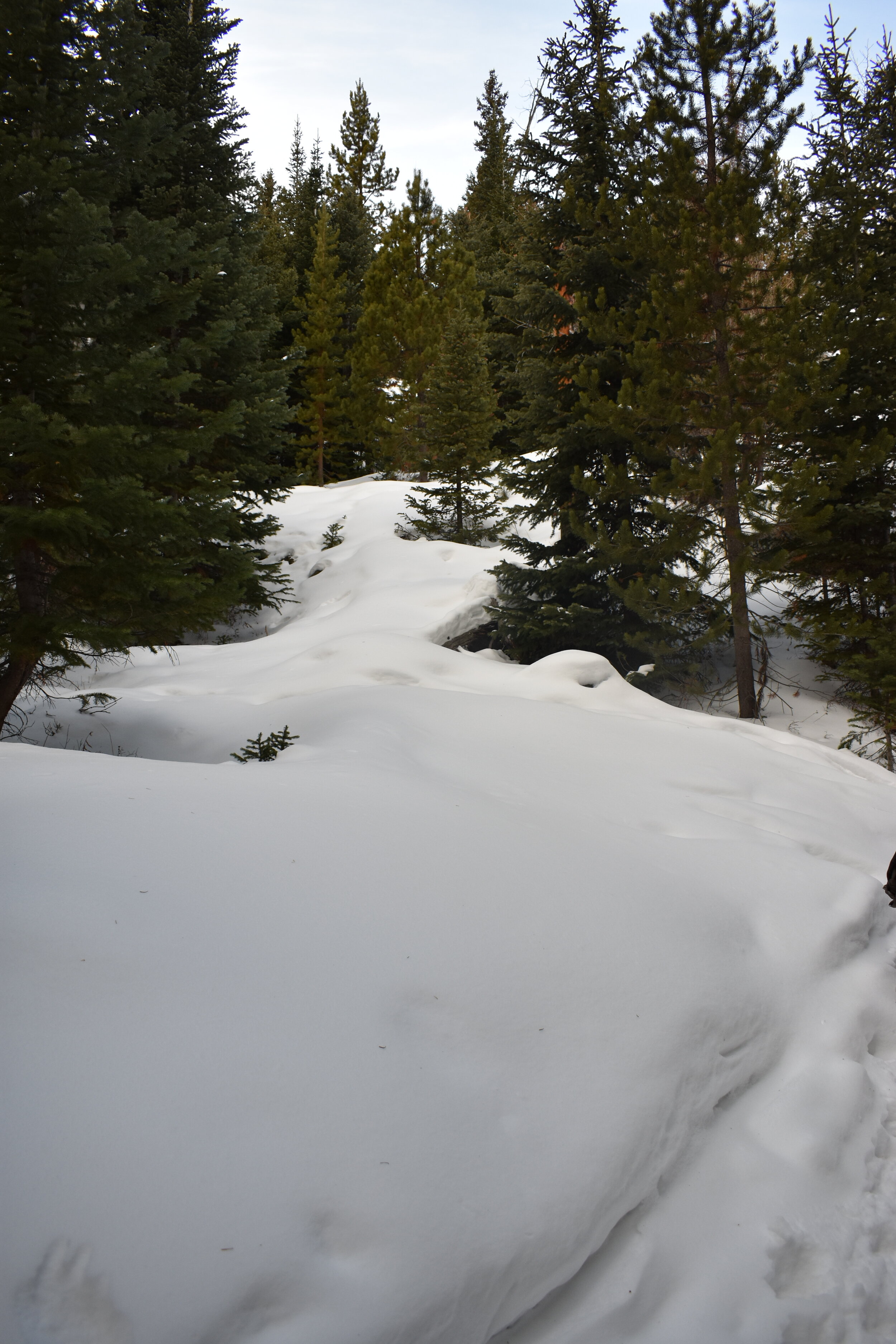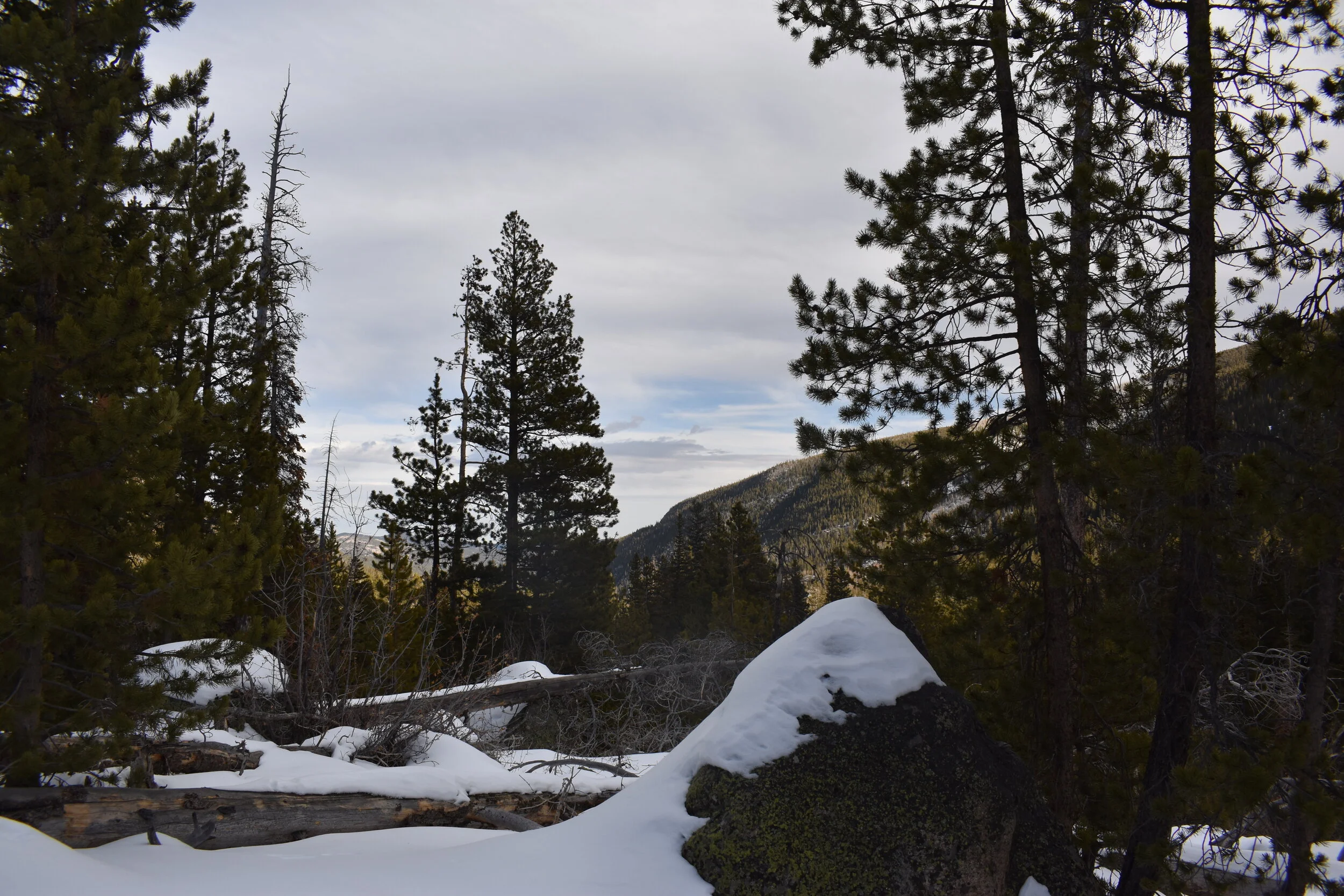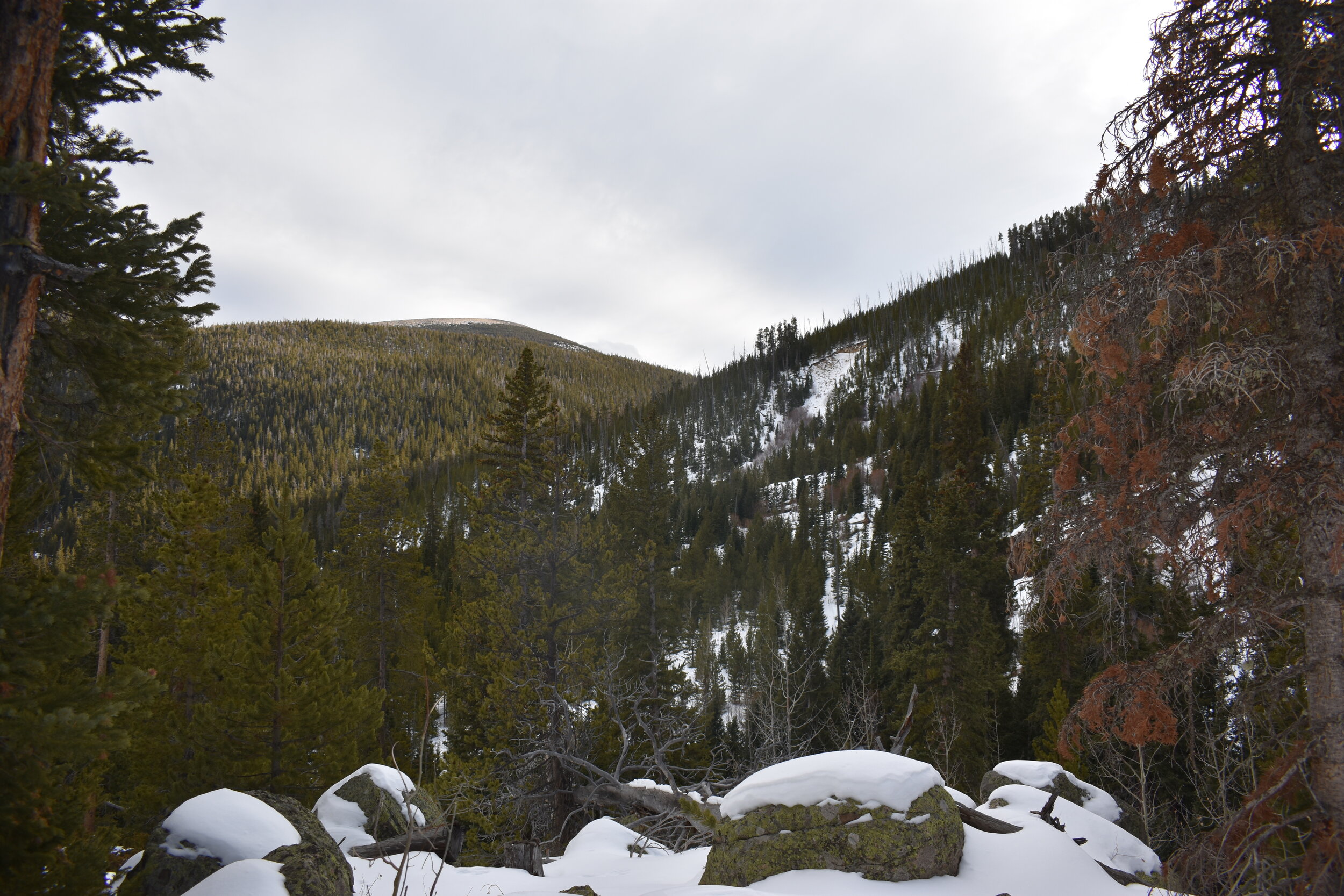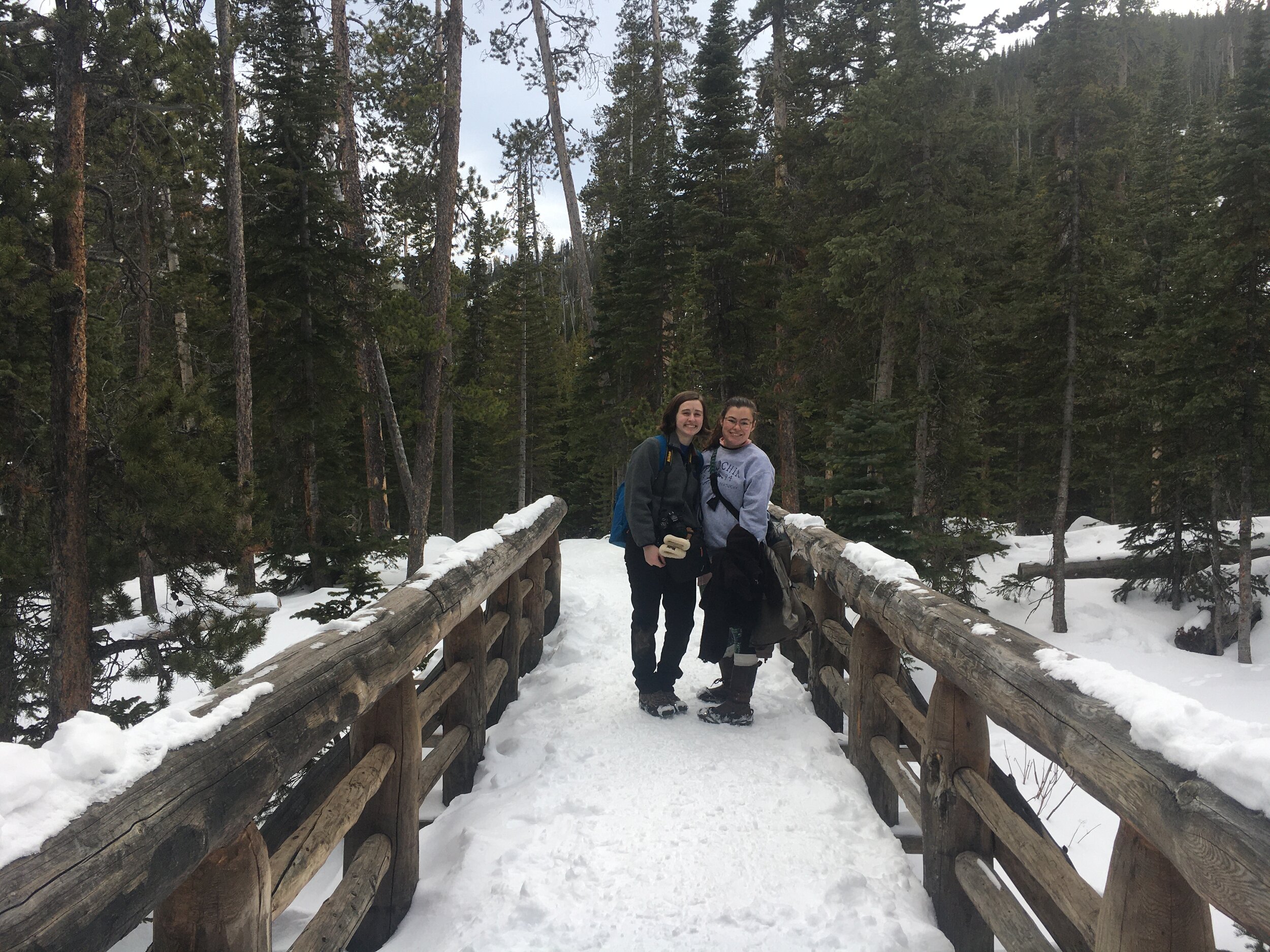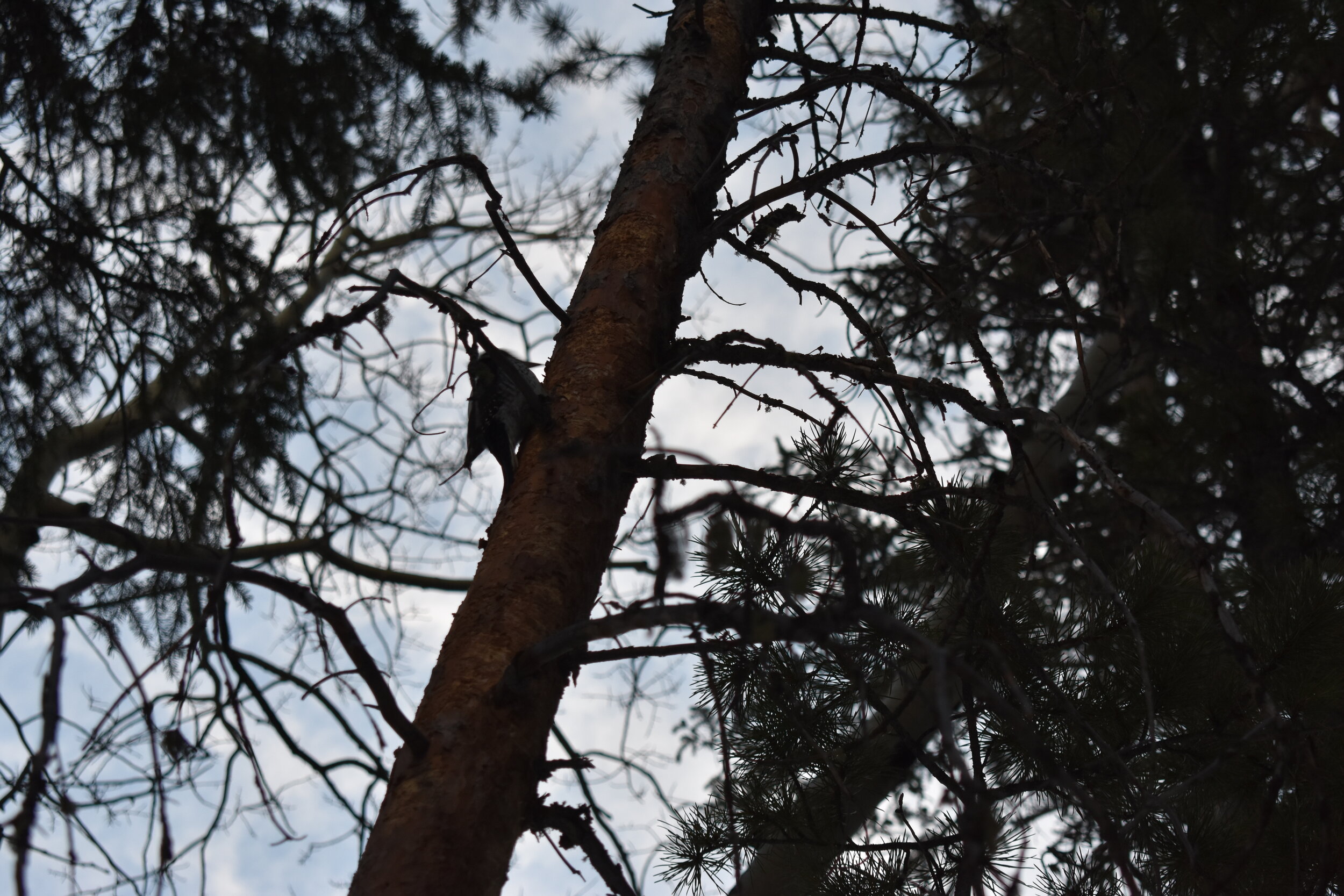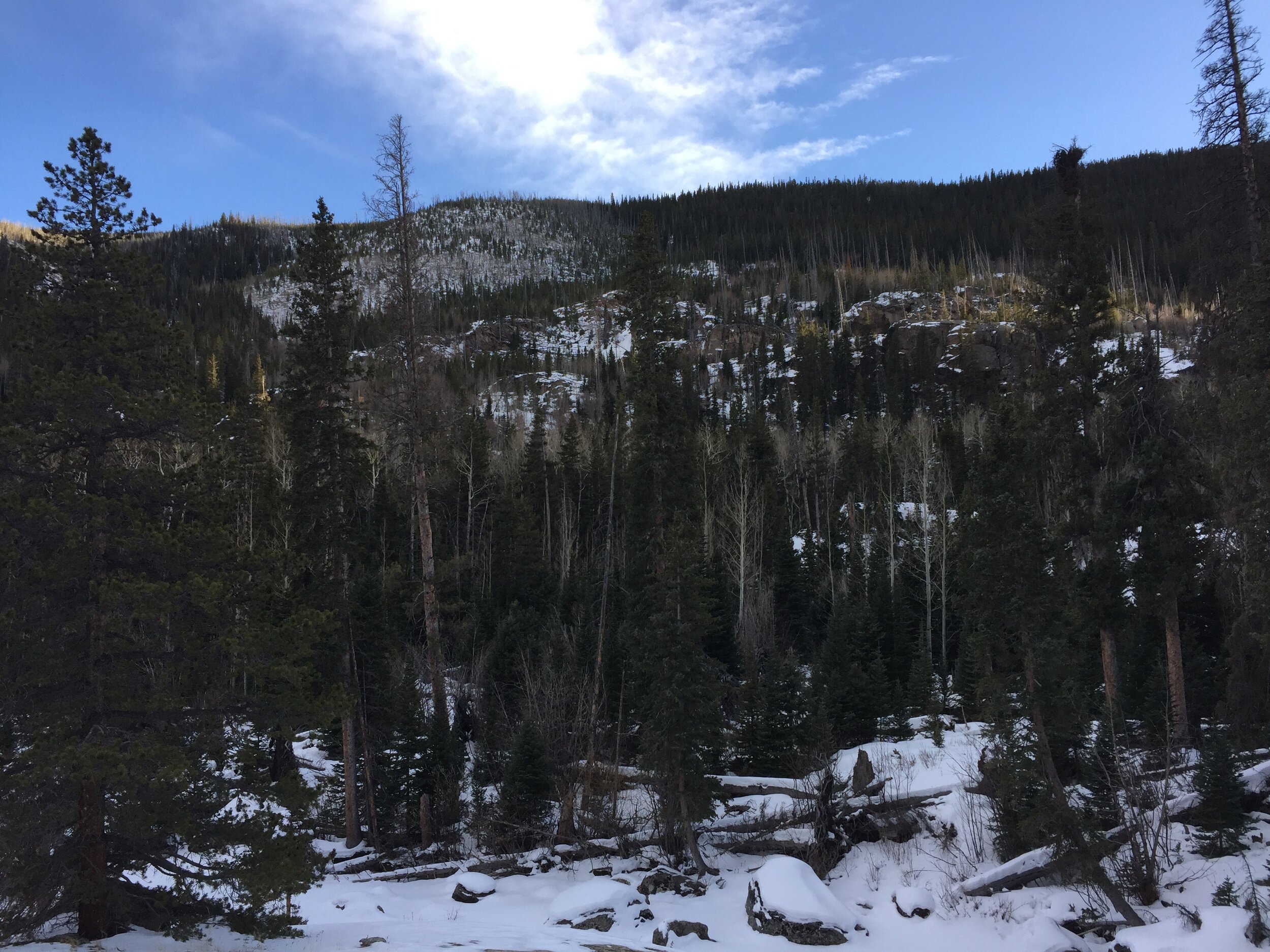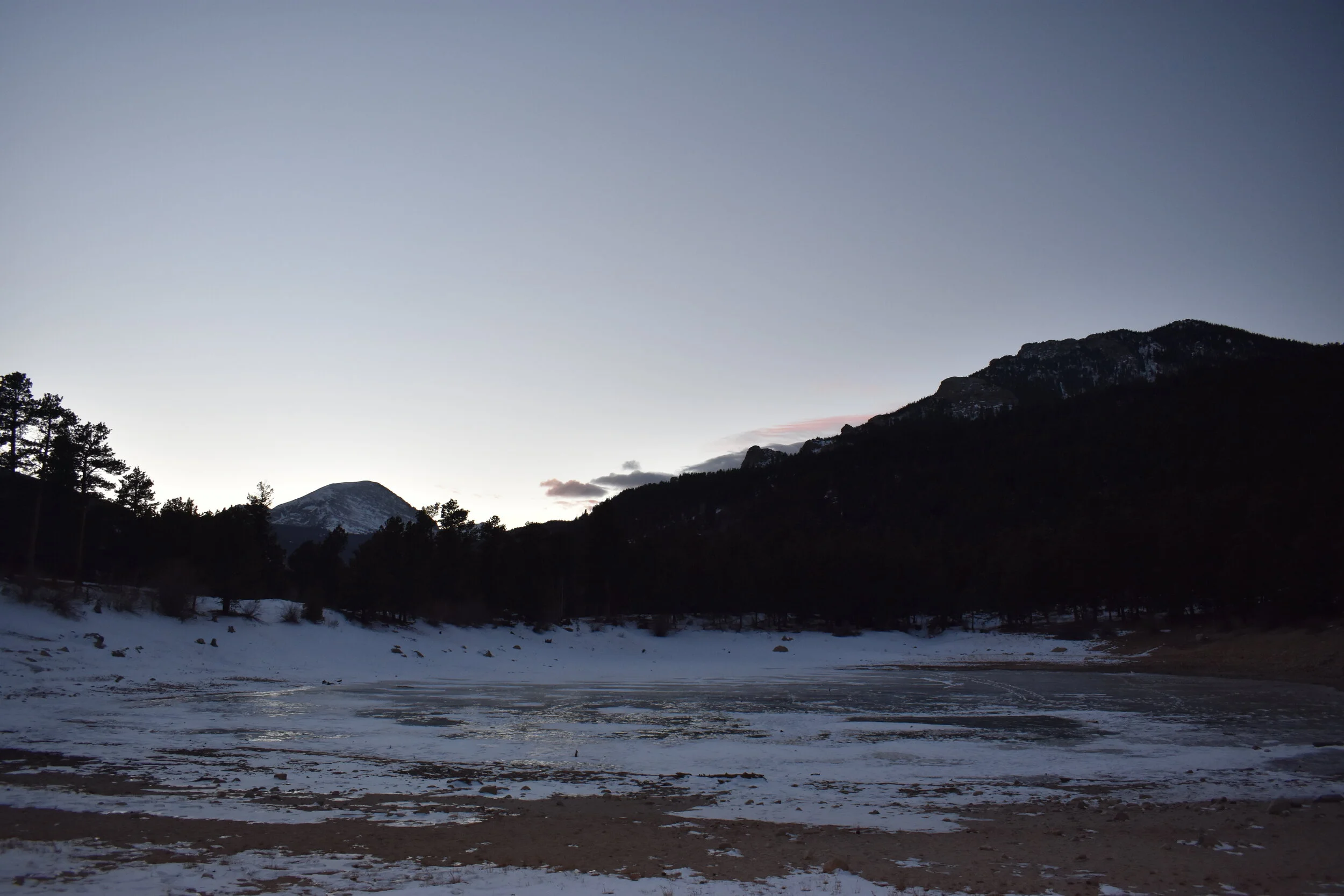A Winter Hike to Ouzel Falls in Rocky Mountain National Park (Allenspark, Colorado)
Long time, no blog! Now that I’m almost done with my first year pursuing my PhD in English, I can confidently say that my resolution to blog more in 2021 was misguided overly optimistic—because here we are, halfway through April, and this is my first blog post of the year.
Regardless, we are jumping back into it with a good one! In 2020, one of my best friends, Kari, moved to Denver, Colorado. Kari, ever giving me excuses to travel/hike new locales (you might recognize her from all my trips to the UP in Michigan, her previous residence), graciously hosted myself and Kayla (best friend/longtime roommate/fellow MFA-er) for a week back in January. This was my first time visiting Colorado and now that I’m vaccinated, I can’t wait for many more trips to see Kari and Kindi the adventure pup and to take advantage of all the breathtaking hiking the state has to offer.
*Side-note/disclaimer: Deciding to travel via airplane in January was something I struggled with for a long time. When I flew to Denver, I hadn’t even eaten inside a restaurant since early March 2020. We all quarantined for two weeks before the trip/COVID tested the day or two before flying out, and I wore a medical-grade N-95, cloth mask, and face shield while in the airport/on the plane, not even removing them to eat/drink unless I was more than 10 feet away from any other person. And I was still stressed out the whole time. Now that vaccines are much more widely available and becoming more and more available every day in the US, my recommendation: get vaccinated, wait two or three weeks, then travel (if flying). And keep wearing your CDC-approved mask! There are still a lot of people out there who believe that endangering the lives of all the people around them is worth their “personal freedom” and refuse to wear masks in the airport/on planes, so despite effectively becoming bubble-boy to travel, all that anxiety caused by those selfish anti-science assholes rule-breaking people did sort of loom over my trip. Now, I know I would have much more peace of mind and be able to focus fully on enjoying myself.
Now, on to the good stuff:
Ouzel Falls, Rocky Mountain National Park (5.4 miles, out and back)
In the winter, RMNP (like other national parks that receive heavy snowfall) closes many of its roads, limiting the access points to trailheads. Additionally, it’s important to check the NPS website daily before your trip because Colorado is prone to wildfires, which can further restrict trail availability. Based on the sections of the park closed due to a wildfire, winter access, and our lack of desire to wake up incredibly early for a 10 mile hike, we settled on Ouzel Falls in the southeast part of the park.
The trailhead can be accessed via the Wild Basin winter parking lot, from which you hike a little ways down a gravel road to the regular Wild Basin parking lot (closed during the winter) and begin the trail. While we were there, it was fairly warm (or so says someone who spent three years acclimatizing to -30-degree Minnesota winters and hiked Badlands National Park in March and almost froze to death). I’d say it hovered around 30ish degrees, but we found it was important to dress in layers that could easily be removed and replaced. Temperatures varied depending on elevation and time of day, ranging from I-need-a-winter-hat level of chilly to I’m-sweating-in-a-Patagonia. Last note on gear: if you are someone who likes winter hiking, invest in winter traction cleats for your boots. We were lucky enough with the weather/packed snow that I think we could have gotten away with just a solid pair of hiking boots, but the Yaktrax made this hike much less strenuous.
While fall will always be my favorite time to hike, winter has a special place in my heart. The snow dampens sound, the air is crisp and fresh, and there are usually way less crowds. RMNP did not disappoint the winter hiker in me. From the moment we stepped on the trail, all I could hear was the crunch of snow, birdsong from the evergreens, and the faint rushing of water below the frozen surface of creeks and rivers.
Click the photos below to enlarge.
The hike itself was, as described, moderate. The beginning of the trail was mainly flat through the forest, then we began to climb upwards. I’m not in shape by any means, but I still didn’t find the uphill portions to be a problem. The highest elevation on the hike is 9370 feet, but it’s only an 870-foot elevation gain from the trailhead, and only at one or two points did it feel as if we were really climbing up the mountain. When I went to Yellowstone, the altitude didn’t bother me, so I didn’t expect any problems here; however, if you know you get altitude sickness easily or altitude strongly affects your endurance, it’s always a good idea to plan for the hike to take longer than you think it will so as not to be caught out after dark.
There are several falls and cascades along the way, including Copeland Falls, Calypso Cascades, and finally, Ouzel Falls. The waterfall crashes 40 feet down the cliffside and over boulders—or at least it normally does when it’s not covered in snow/mostly frozen! It was still beautiful, but I do wish I could have seen it in its full, rushing glory.
This trail also connects through to several alpine lakes, which I imagine would be stunning in the spring or fall.
The hike back down was probably my favorite, with the sunlight painting the mountaintops golden. Our one wildlife sighting of the day was a spotted woodpecker, whose silhouette you can catch in a couple of my photos.
Our last stop on the way out of the park was a frozen pond to watch some of the sunset. Pro-tip: leave a nice treat for yourself in the car to enjoy after a long hike. Our choice that day was some millionaire’s shortbread that we’d made the night before.
Our Colorado adventures are to-be-continued with trips to Dinosaur Ridge, Red Rocks Park, and Great Sand Dunes National Park. Thanks for reading!

























